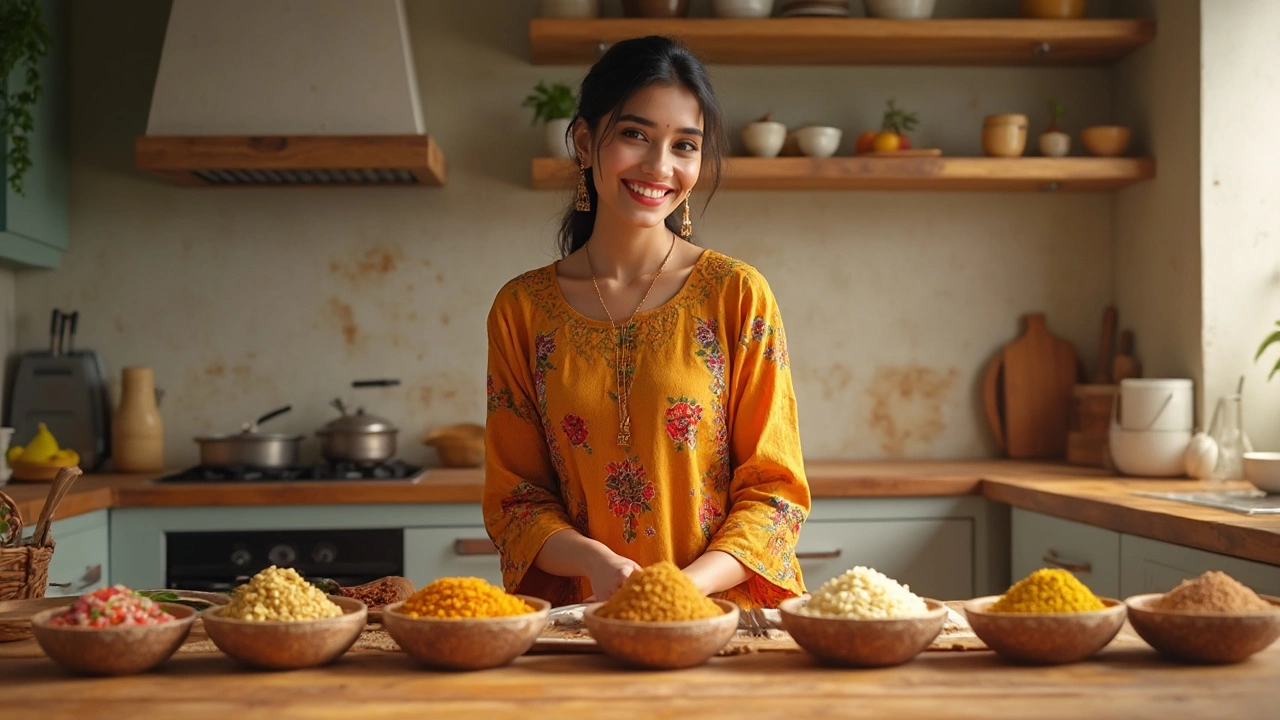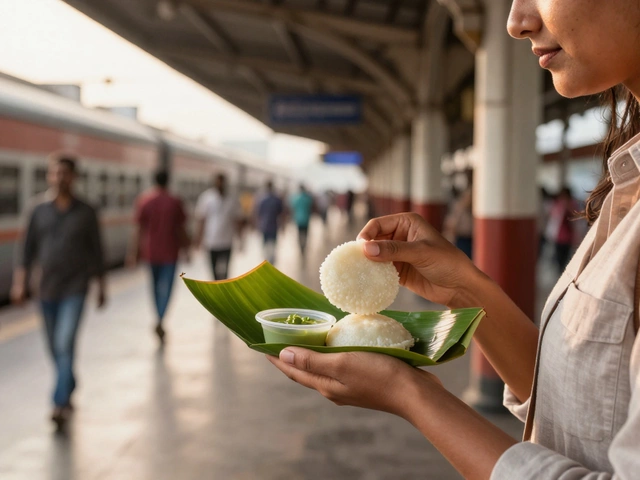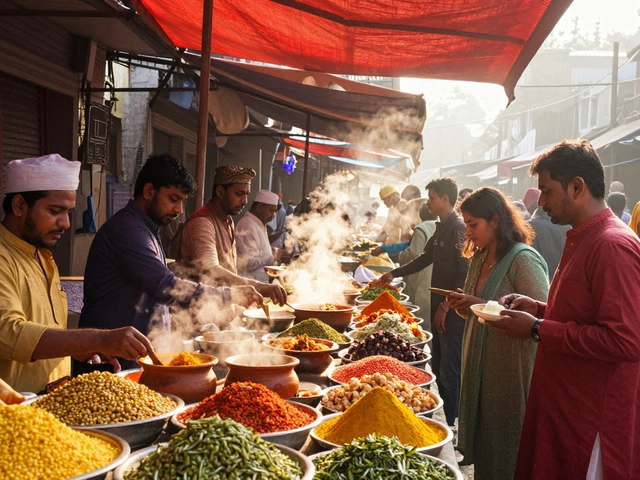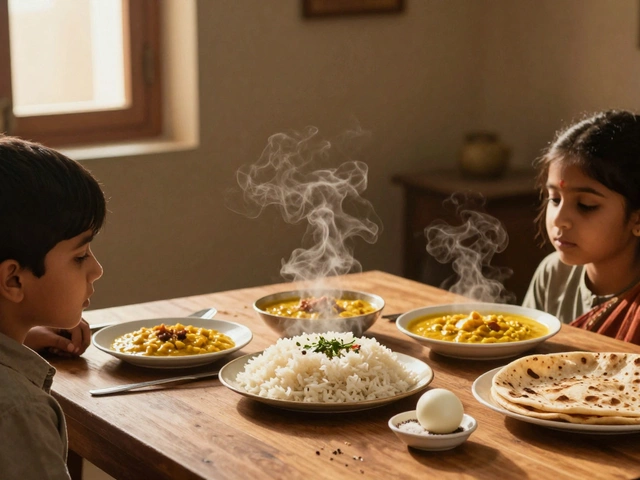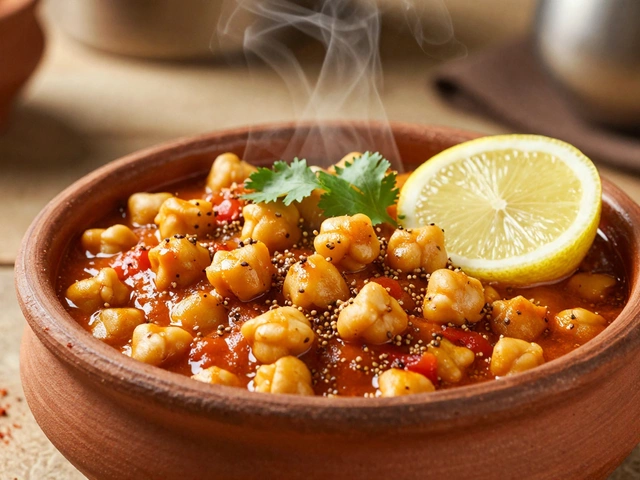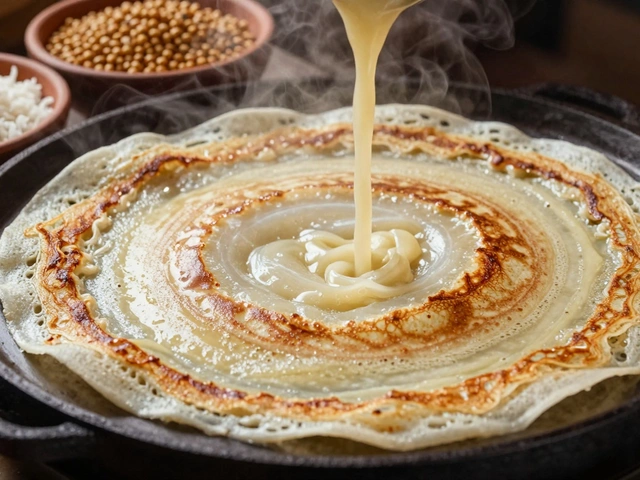If you stroll through any Indian kitchen, the sight (and smell) of simmering dal is impossible to miss. Many people grow up thinking dal is a high-protein powerhouse, especially if they eat a vegetarian diet. But here’s a surprise: dal isn’t a “complete” protein, and it’s not the same as the protein you get from chicken or fish. Sounds unfair, right? But nutrition science has a few interesting twists up its sleeve.
What Makes a Food a Protein Source?
Let’s clear up what we mean by "protein" when talking about food. Our bodies need protein for pretty much everything—from building muscles, to glowing skin, to a good night's sleep (yes, sleep hormones are built from amino acids, the tiny bricks of protein). But protein isn’t just a single thing. Dense science has given us a rule: there are 20 different amino acids, and out of those, 9 are called “essential.” That means your body can’t make them, so you have to get them from your food.
Foods that pack all nine essential amino acids are dubbed “complete proteins.” Think animal foods: meat, eggs, dairy. Now, plant foods rarely check all the boxes. Lentils—the split peas we call dal—are loaded with protein for a plant, but they don’t bring the full lineup. They're short on methionine and cysteine, two amino acids you absolutely need. That missing piece is why calling dal a pure protein source is only half the story.
Let’s crunch numbers. Raw lentils have about 24 grams of protein per 100 grams, but after cooking (since we don’t eat raw lentils), that’s about 9 grams per cup. Compare that to chicken breast, which delivers around 31 grams per 100 grams—plus all the essential amino acids your body loves.
| Food | Protein (per 100g cooked) | Complete Protein? |
|---|---|---|
| Chicken Breast | 31g | Yes |
| Cooked Lentils | 9g | No |
| Boiled Eggs | 13g | Yes |
| Paneer (Indian Cheese) | 18g | Yes |
| Tofu | 8g | Yes |
So why does dal’s protein power get so much hype? For vegetarians, dal is a star because plant-based options don’t usually come close. But on its own, *dal* isn’t a magic bullet for all your protein needs. The trick is to combine it smartly—add rice or roti and suddenly the gaps fill in. That’s because grains like rice are low in lysine (an amino acid lentils have plenty of), but high in methionine. The combination brings you to full-strength protein. Crazy, right? That basic kitchen pairing actually covers your bases in a way a single bowl of lentils can’t.
So dal is protein-rich among vegetables, but not the protein gold standard. It still shines with fiber, iron, magnesium—you get an A+ on lots of nutrients—but if you're relying on it as your only protein, you're missing out on some of the good stuff your body craves. Want to up your vegetarian protein game? Pair dal with grains, dairy, or toss in some nuts or seeds. That’s how you keep your diet well-rounded, without missing the essentials.
Here’s a quick tip: many Asian and Mediterranean dishes naturally balance plant proteins. Beans and rice, hummus and pita, dal and roti—they all spring from a nutritional instinct to round out those amino acids. Your grandma may not have known the science, but she sure knew the secret sauce of balanced meals!
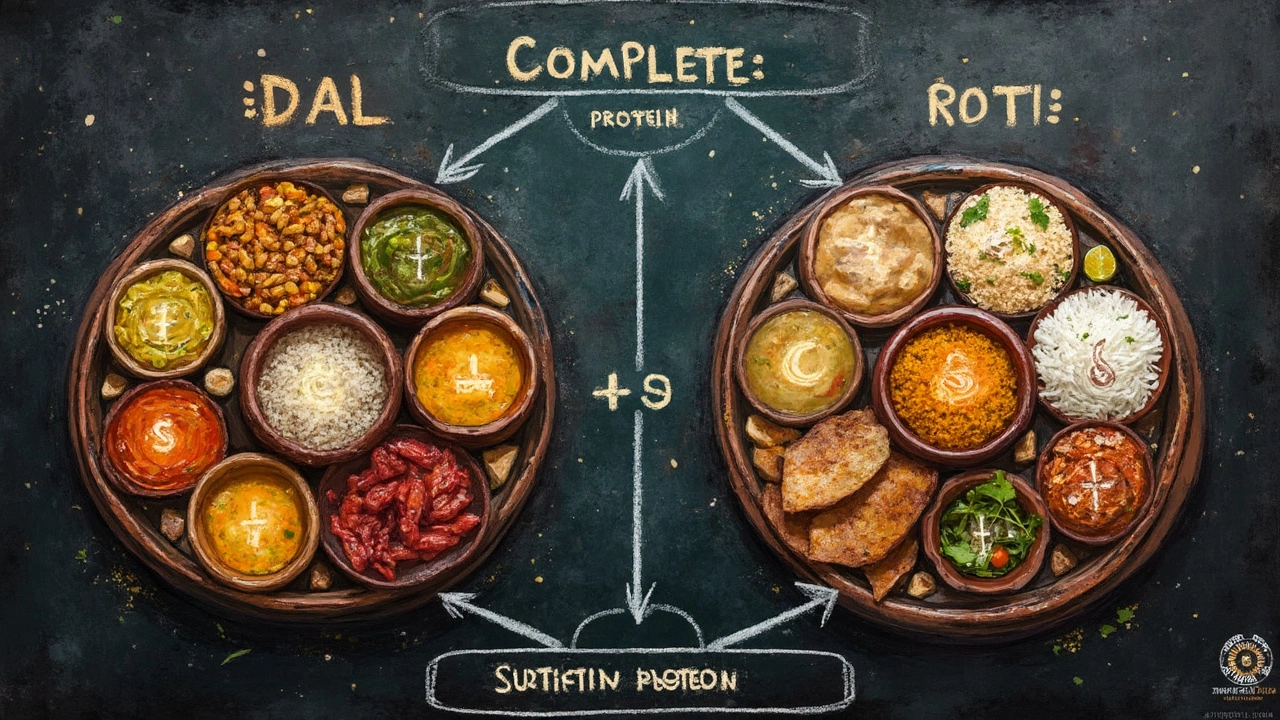
Dal and the Protein Myth: Labels, Culture, and What You Really Get
The marketing around plant-based eating muddies the water. Packaged dals sometimes come with flash labels trumpeting “high protein!”—and that’s not entirely wrong, because compared to broccoli or potatoes, dal is way ahead. But when you use “protein” as shorthand, it’s easy to think a serving of dal does the same job as a steak. That’s where the myth grows.
So, what are you actually eating when you tuck into a bowl of dal? Lots of benefits, to be fair. Dal is packed with dietary fiber, which keeps your gut happy and lowers cholesterol. It’s a top source of iron for vegetarians (especially if you squeeze in some vitamin C, like lemon, to help absorb it). Folate, potassium, and magnesium—these come as bonus prizes. But the protein story isn’t simple. Here’s a myth-busting tidbit: there isn’t a single, perfect vegetarian food that covers all the essential amino acids in the right balance, unless you count soy (tofu, tempeh, edamame), which is a bit of an exception in the plant world.
That hasn’t stopped cultures all over the globe from thriving on plant proteins. Studies show vegetarians, when they eat a variety of foods, easily hit protein targets—often around 0.8-1 gram per kilo of body weight per day for adults. It’s rare for anyone eating enough calories to be truly protein starved (unless you’re subsisting on white rice and sugar). But if you’re building muscle or you're an athlete, you might have to think a little harder: just dal won’t cut it. That’s one reason vegetarian athletes often reach for supplements like pea, soy, or rice protein powder, or mix up quinoa and beans in their meals.
So, if labels have you fooled, remember: “protein” isn’t just about grams on a nutrition label. It’s about what’s inside those grams—are they bringing all the essential amino acids to your cells, or just some? Food scientists and dietitians call this “protein quality.” Lentils deliver “good” protein by plant standards, but “excellent”? That goes to complete sources. If you’re eating dal, enjoy it for what it is: a tasty, protein-boosting, heart-friendly food, but not the lone superhero of the protein world.
Psst, if you want to get nerdy, nutritionists sometimes use a metric called PDCAAS (Protein Digestibility Corrected Amino Acid Score) to rate how much protein in a food your body can use. Chicken and eggs score 1.0 (perfect); lentils? Closer to 0.6. That means your body can’t use all the protein from dal the same way it could from an egg. It’s not just geeky trivia—this matters if you’re relying on plants for all your protein.
Culture always shapes our plates, and the context counts. In societies where vegetarianism has deep roots, food combos have evolved for a reason. Ever notice how dal almost never comes alone? There’s rice, chapati, veggies… it’s dinner synergy in action. Pairing isn’t random—it’s nutritional wisdom passed down by taste, habit, and probably a little family nagging.
If you’re reaching for more plant power in your meals, don’t stress over “incomplete proteins” at every single sitting. Variety across your day is good enough, and your body is smart about mixing and matching. But pay attention if you’re restricting lots of foods or eating very little—protein gaps get wider once diversity drops.
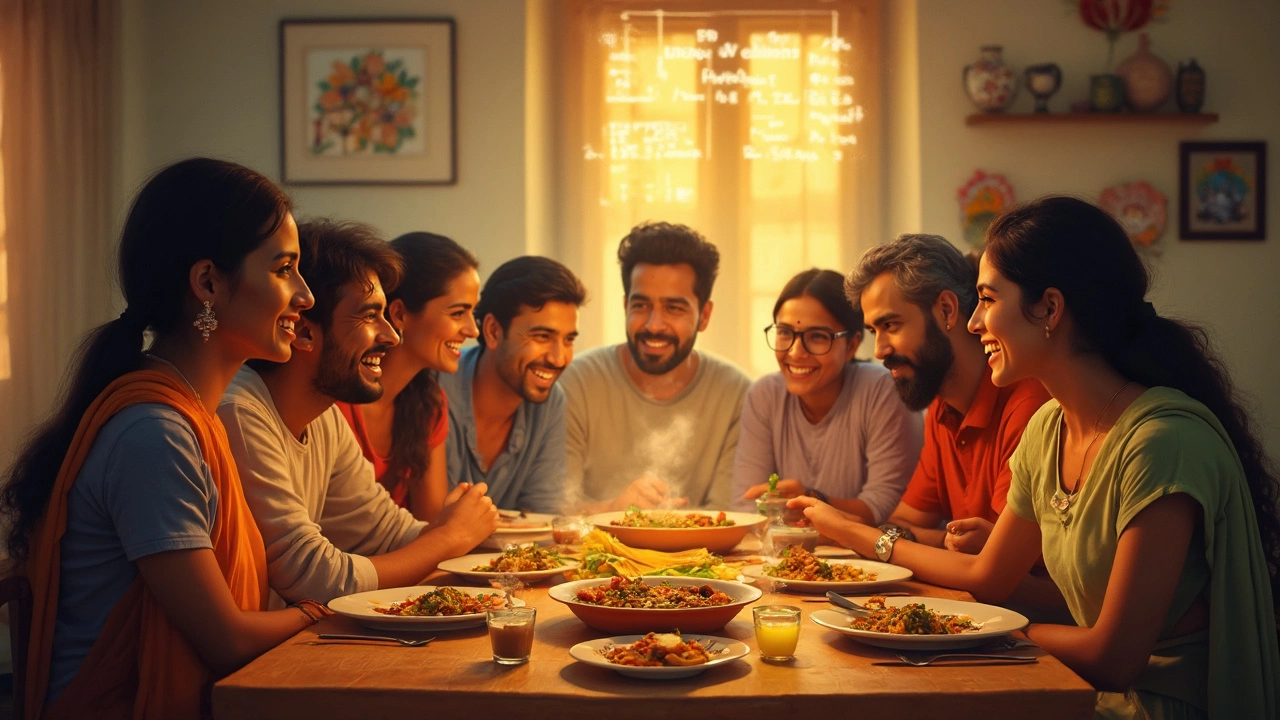
How to Balance Your Plate: Getting Enough Protein from Dal and Beyond
So you're hooked on dal, but don't want to shortchange your body on protein. There are some easy kitchen hacks and food combos that pull lentils up into the nutritional big leagues.
- Pair dal with whole grains (rice, quinoa, millet, whole wheat chapati). The mix gives you all the essential amino acids. Old school meals got it right: dal chawal, khichdi, idli sambar—they fill the gaps.
- Add a scoop of Greek yogurt, paneer, or a handful of roasted seeds (like pumpkin or sunflower) to boost protein quality and keep meals interesting.
- Experiment with sprouting lentils. Sprouting bumps up protein and nutrient availability, with a fresh taste to match.
- Think beyond brown: lentils come in red, green, black, and yellow. Mix them up to get different flavors and nutrients.
- Watch your serving size. Lentils shrink a lot while cooking. You might think you’re eating a giant bowl, but most of it is water. Two cups of cooked dal? That’s only about 18 grams of protein.
- Go global. Try Mexican black beans and rice, Middle Eastern mujadara (lentils with rice and caramelized onions), or Mediterranean chickpea salads. World cuisines are rich with clever combos.
- Use nuts and seeds as a topper or side. They’re concentrated in both protein and healthy fats.
- Got soy? Tofu, tempeh, and edamame are plant foods that punch at the same level as animal-based proteins when it comes to completeness.
An easy guideline? Aim for a mix in every meal—dal with grain and a veggie or two. If you like eggs or dairy, those help round things off too. Kids, athletes, pregnant women, and anyone recovering from illness need more protein, so stack your meals for extra coverage.
One common worry is "protein combining," like you have to eat lentils and grains in the same meal or suffer some mysterious deficit. The real scoop: your body keeps an amino acid pool, filling in as needed over the day. Obsessing over every meal misses the big picture, unless your diet is super-restricted or you have unique needs.
Don’t forget the flavor factor! Add a squirt of lemon for vitamin C (it helps you absorb the iron in lentils). Spices like turmeric, cumin, coriander, garlic, and ginger aren’t just for taste—they can boost digestion and bring anti-inflammatory perks too.
And if you’re counting macros for the gym, here’s a tip: dal’s protein comes with a fair amount of carbs. If you’re keto or low-carb, you’ll need to plan extra carefully, as most lentils won’t fit your daily limits.
So, should you love dal less after learning all this? Not at all. It’s a budget-friendly, tasty, sustainable food, and a big part of healthy diets worldwide. Just know that *dal* isn’t a pure protein source like chicken or eggs. Mix things up, appreciate the variety, and you’ll meet your protein goals with ease—and enjoy every spicy, hearty bowl along the way.
